Menu engineering is the science of designing menus to strategically influence customer behavior and maximize restaurant profitability. This practice combines psychology, design, and data to guide choices and help boost sales of high-margin items. Research shows that menus crafted with menu engineering principles can increase profits by more than 15%.
Understanding menu item costs
To get started, you’ll need to know the cost of goods sold (COGS) for each of your menu items. COGS refers to the total cost of ingredients used to make a dish, including food, beverages, packaging, and even spices and condiments. Accurately calculating COGS is essential for setting prices, measuring profitability, and managing inventory. COGS ratio is calculated by dividing total food and beverage costs by total revenue. A healthy COGS ratio range for restaurants is generally 30–35%. Lowering COGS through efficient sourcing, portion control, and waste management can significantly improve margins.
Menu engineering matrix
Once you know your item costs, classify dishes using the menu engineering matrix. This framework helps you identify which items to promote, rework, or remove.
- ⭐️ Stars: High profitability and high popularity. Highlight these items to keep them selling strong.
- 🧩 Puzzles: High profitability but low popularity. Reposition, rebrand, or pair them with specials to drive orders.
- 🐴 Plow Horses: Low profitability but high popularity. Adjust portions, ingredient sourcing, or pricing to boost margins.
- 🐶 Dogs: Low profitability and low popularity. Consider removing or reworking these items.
Psychology principles that influence diners
Menu engineering taps into psychology to guide ordering decisions:
- Primacy effect: Diners remember the first item they see. Place your most profitable dishes up front.
- Anchoring: High-priced items make others look more reasonable. Feature one premium “anchor” dish.
- Choice overload: Too many options overwhelm. Keep each category to seven items or fewer.
- Visual cues: Use boxes, bolding, or icons sparingly to draw attention to high-margin dishes.
- Descriptive labeling: Sensory-rich words like “succulent” or “crispy” spark cravings and increase sales.
Menu layout that pays off
Menu layout plays a critical role in driving choices. Diners’ eyes naturally follow what’s known as the “Golden Triangle” pattern: center first, then top right, then top left.
Use this rule to your advantage by:
- Placing profitable dishes in these prime spots.
- Highlighting them with design elements like boxes or color.
- Using compelling descriptions to make them stand out.
- Applying decoy pricing—placing a higher-priced dish near your target item to make it seem like a better value.
- Grouping items logically by category with clear headers and spacing so guests can skim quickly.
Research also suggests that for casual eateries including one photo per page can boost sales by up to 30%.
The power of pricing psychology
Small pricing choices can have a big impact:
- Skip dollar signs. “24” feels less expensive than “$24.00.”
- Avoid price columns. Align descriptions, not prices, so customers focus on food.
- Use charm pricing in casual restaurants. “9.95” appears cheaper than “10.00.”
- Round numbers for premium positioning. Whole numbers convey quality at high-end restaurants.
- Use price anchoring. Place a $38 steak above a $26 entree to make the latter feel like a deal.
Language crafted to sell
Great menus use vivid, emotional, and sensory language to influence customers’ appetites. Consider how word choice transforms a dish:
- Before: Grilled chicken sandwich
- After: Juicy, herb-marinated grilled chicken on a toasted brioche bun
Diners respond strongly to sensory triggers (“buttery,” “crispy”), nostalgic cues (“homestyle,” “classic”), and ethical terms (“locally sourced,” “organic”). In fact, 65% of diners say menu description is the most important part of choosing an item.
Small changes, big impact
Menu engineering is both an art and a science. By applying data, design, and psychology, restaurants can enhance guests’ dining experience while boosting business profitability. Even small adjustments—like reworking item placement, adjusting prices, or refining descriptions—can make a meaningful difference to your bottom line.
Contact us today:
[email protected]
(800) 617-6067
RewardsNetwork.com
The information contained in this digital content is provided for informational purposes only and should not be construed as providing tax, legal, accounting, career, business, or other professional advice. You should consult your own professional advisors before engaging in any course of action. Individual results on the Rewards Network platform will vary.
© 2025 Rewards Network Establishment Services Inc. All Rights Reserved.






